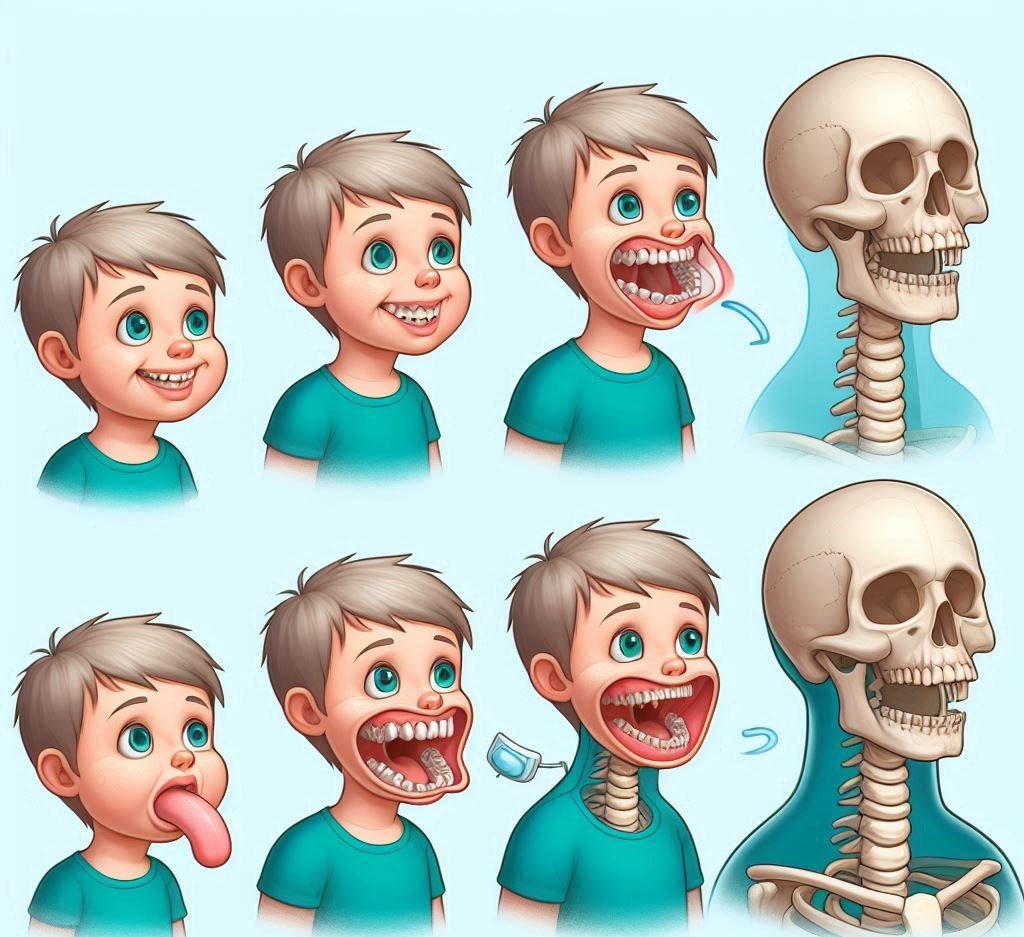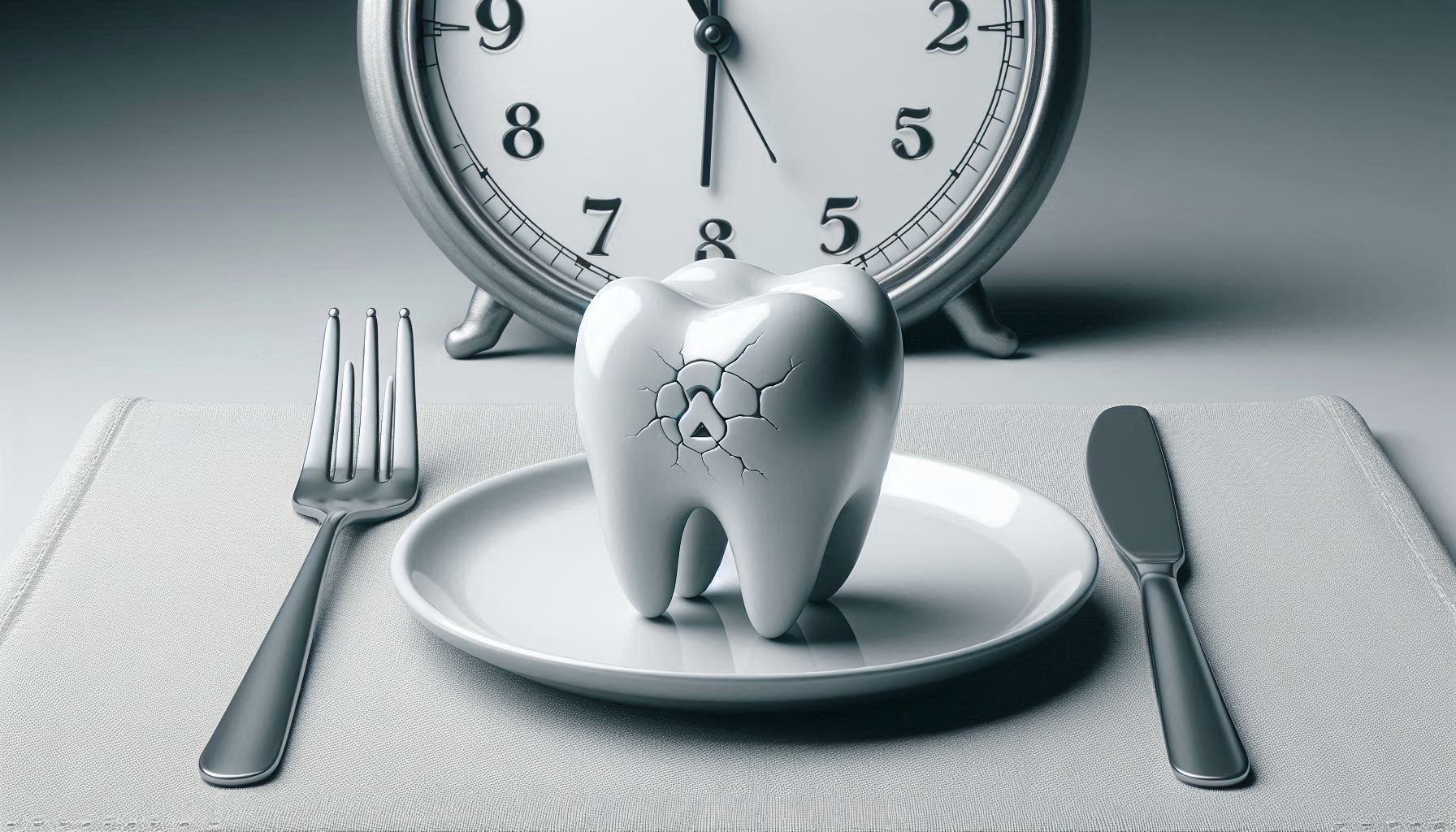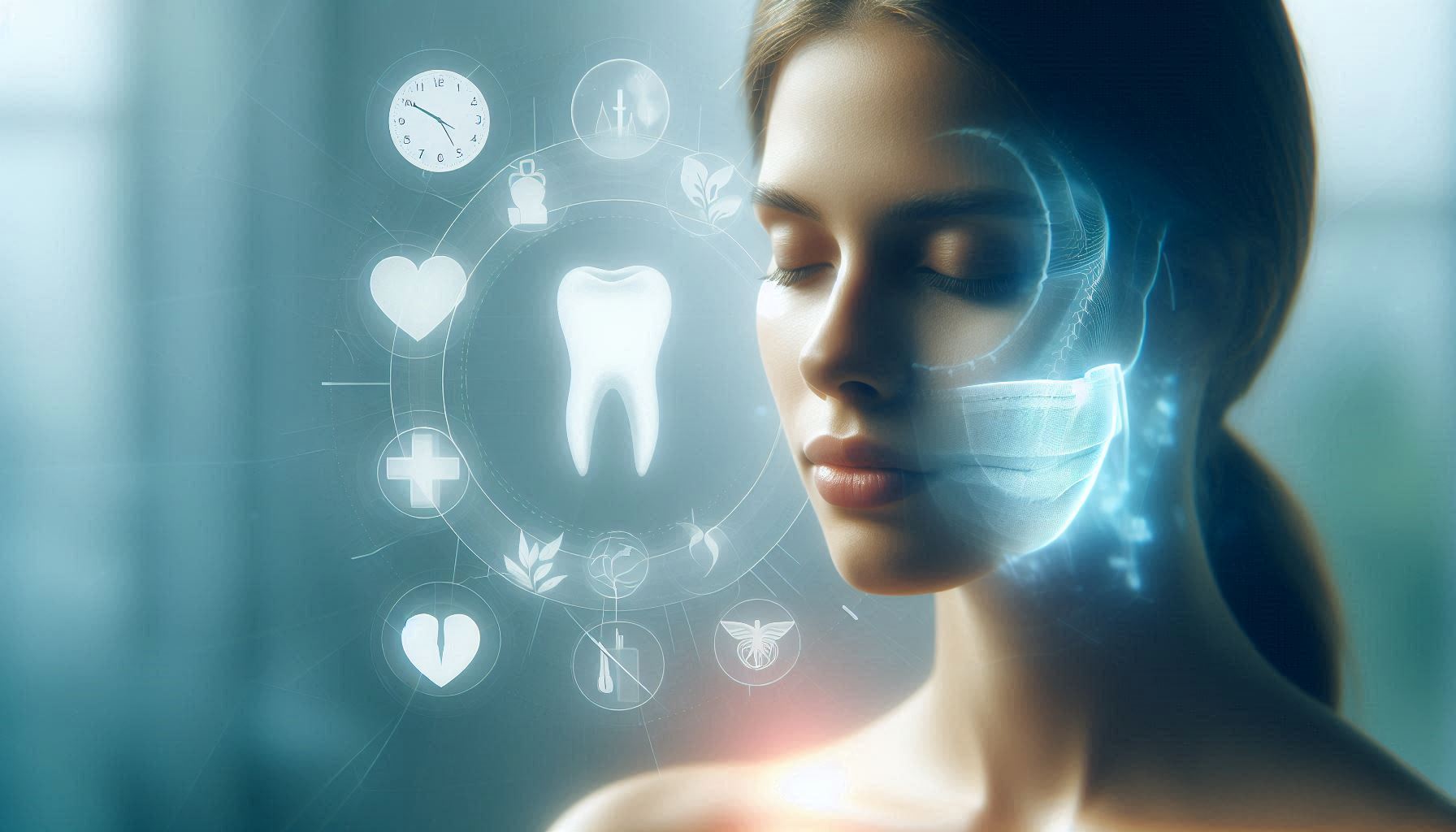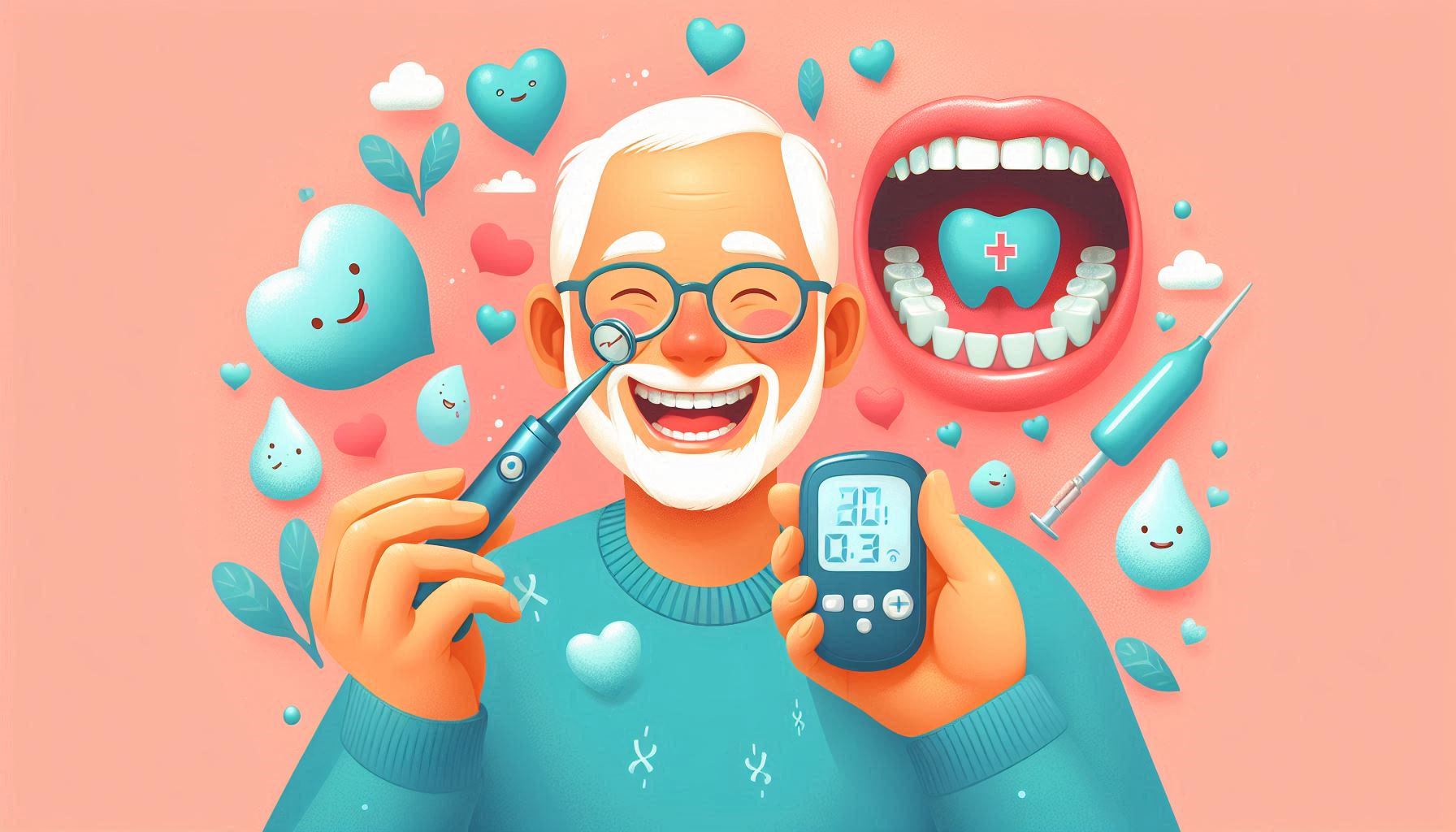Excessive bone growth in the mouth is a condition that can have a profound impact on an individual’s oral health and overall quality of life. Whether it manifests in childhood or progresses into adulthood, changes in the bone structure of the mouth require a thorough understanding to manage effectively. From genetic factors to environmental influences, the causes of excessive bone growth are multifaceted, and they can vary significantly between individuals.
Throughout the course of this article, we will explore how excessive bone growth in the mouth develops, how it changes over time, and how it can affect the overall health and functionality of the oral cavity. We’ll also take a closer look at the various conditions associated with abnormal bone growth, diagnostic techniques, treatment options, and preventive measures. The goal is to provide a comprehensive guide on how excessive bone growth in the mouth evolves from childhood to adulthood and how individuals can manage and minimize its impact.
Understanding Bone Growth in the Mouth
The bones in the mouth play crucial roles in supporting the teeth, forming the structure of the jaw, and facilitating essential functions such as speaking, chewing, and swallowing. These bones include the maxilla (upper jaw) and mandible (lower jaw), which house the teeth and support various structures in the mouth.
Bone Structure of the Mouth
The human mouth is made up of several bones, each serving specific functions:
- Maxilla: The upper jaw bone, which houses the upper teeth and supports the muscles of the face.
- Mandible: The lower jaw bone, which holds the lower teeth and plays a critical role in jaw movements.
- Palate: The roof of the mouth, separating the oral cavity from the nasal cavity.
- Other bones: Smaller bones such as the zygomatic arch (cheekbones), nasal bones, and temporomandibular joint (TMJ) all contribute to the overall structure of the mouth.
Role of Bones in Oral Health
Healthy bone development and density in the mouth are essential for proper oral function. These bones provide a stable base for the teeth, allowing them to remain firmly in place, while also offering structural support for the surrounding muscles, ligaments, and tissues. When bone growth becomes excessive, it can lead to misalignment of the teeth and jaw, difficulty in chewing or speaking, and even discomfort or pain.
Types of Bone Growth Abnormalities
Excessive bone growth in the mouth can manifest in different forms, including:
- Exostosis: The formation of abnormal bone growths on the surface of existing bones. This often occurs on the gums or jawbones.
- Osteoma: A benign tumor made up of new bone growth, typically found on the jaw or skull.
- Hyperplasia: An overgrowth of bone tissue or other cells in the mouth, leading to abnormal enlargement.
- Paget’s Disease: A chronic disorder that causes the bones to become enlarged and weakened, sometimes affecting the jawbones.
These conditions can occur due to a variety of factors and may be present from childhood or develop later in life. As the individual matures, the growth and progression of these abnormalities can change, potentially leading to complications if not addressed.
Factors Contributing to Bone Growth in Childhood
Excessive bone growth in childhood is influenced by multiple factors, both genetic and environmental. Understanding these factors can help determine the likelihood of such growth occurring, as well as its potential effects on oral health.
Genetic Factors
Genetic predisposition plays a significant role in the development of excessive bone growth. Children who inherit certain genetic traits from their parents may be more likely to develop conditions like exostosis or osteomas. In some cases, these genetic factors may lead to congenital conditions that affect bone development from an early age.
Hormonal Influences
The growth of bones in the body is regulated by a complex interplay of hormones, particularly during childhood and adolescence. Growth hormones (GH) and sex hormones (estrogen, testosterone) influence the development and maturation of bones. Abnormalities in these hormones can sometimes lead to excessive or irregular bone growth in the mouth.
Environmental Factors
Certain environmental factors during childhood can also contribute to excessive bone growth. For instance:
- Dietary factors: A lack of essential vitamins and minerals, particularly calcium and vitamin D, can interfere with normal bone growth.
- Oral habits: Chronic mouth breathing, thumb sucking, or other oral habits can put stress on the bones in the mouth, potentially contributing to abnormal bone growth.
- Infections or injuries: Previous infections, trauma, or surgeries in the oral region can stimulate abnormal bone growth during the healing process.
Impact of Childhood Development Stages
The early years of childhood are a period of rapid growth, during which the bones and teeth develop and mature. Any disruption in this growth phase—whether through genetics, hormones, or environmental factors—can lead to abnormalities that may become more apparent as the child ages.
Common Conditions Involving Excessive Bone Growth
Several conditions are associated with excessive bone growth in the mouth, ranging from benign growths to more serious diseases. Let’s take a closer look at some of the most common:
Hyperplasia
Hyperplasia refers to the excessive growth of cells or tissues. When it affects the bone tissue in the mouth, it can cause the bone to become enlarged, leading to discomfort, misalignment of teeth, or difficulty in speaking and chewing. Hyperplasia can occur due to several factors, including inflammation, irritation, or hormonal changes.
Osteoma
An osteoma is a benign tumor of the bone, typically characterized by slow growth and the formation of new bone tissue. While osteomas in the mouth are rare, they can cause issues such as pain, swelling, or difficulty moving the jaw. Treatment often involves surgical removal, especially if the osteoma affects the jaw’s function.
Diagnosing Excessive Bone Growth in Children
Detecting excessive bone growth early on is crucial in managing the condition and preventing further complications as the child grows. Early intervention not only improves the chances of effective treatment but also helps avoid potential long-term oral and aesthetic issues.
Clinical Symptoms and Signs
In childhood, excessive bone growth may not be immediately obvious. However, certain signs could indicate that bone growth is abnormal. These include:
- Unusual swelling or lumps in the mouth or jaw area
- Changes in the alignment of teeth
- Difficulty in chewing, speaking, or swallowing
- Pain or discomfort in the jaw, gums, or teeth
- Delayed eruption of permanent teeth
Parents and caregivers should be vigilant if these symptoms are noticed, as early detection can prevent further complications and reduce the need for more invasive treatments later on.
Diagnostic Tools
To confirm the presence and nature of excessive bone growth, several diagnostic tools are employed:
- X-rays: X-ray imaging is commonly used to identify irregularities in bone structure. It helps detect the size, location, and type of abnormal bone growth.
- CT Scans: A computed tomography (CT) scan provides a more detailed view of the bone structure, helping doctors assess the extent of the growth and determine whether it is benign or malignant.
- MRI: Magnetic resonance imaging (MRI) can provide high-resolution images of both bone and soft tissue, which is useful for diagnosing conditions that affect both.
Role of Pediatric Dentists and Oral Surgeons
Pediatric dentists and oral surgeons play key roles in diagnosing excessive bone growth in children. Dentists typically conduct regular exams to monitor the development of the teeth and jaw. If abnormalities are suspected, they may refer the child to an oral surgeon or specialist for more advanced diagnostic testing. Early consultations are vital, especially if the growth is causing functional issues or pain.
Progression from Childhood to Adulthood
Excessive bone growth in the mouth may change over time as a child matures. Understanding how bone growth progresses is important for anticipating potential complications and ensuring that the individual receives appropriate care throughout their lifetime.
How Excessive Bone Growth Evolves Over Time
Bone growth is a dynamic process that continues throughout childhood and adolescence. In some cases, excessive growth may stabilize or even shrink as the individual matures, especially if the condition was related to a childhood growth spurt. In other cases, the abnormal bone growth may continue into adulthood, possibly causing additional complications. The nature of these changes is highly individualized, with factors like genetics and hormonal changes playing a significant role in the progression of the condition.
During puberty, hormonal shifts can lead to an acceleration of bone growth. If the abnormal growth is already present, it may become more pronounced during this time. Conversely, in some cases, excessive bone growth may cease or even regress as the individual reaches adulthood, particularly if it is linked to a temporary growth phase.
The Role of Puberty and Adulthood in Influencing Bone Growth
Puberty is a critical period in the development of the human body, marked by significant hormonal and physical changes. For individuals with excessive bone growth in the mouth, these changes can either exacerbate the condition or stabilize it. As the body’s growth slows down and eventually stops during late adolescence and early adulthood, the abnormal bone growth may either persist or become less pronounced.
Adult bone structure tends to solidify and become less responsive to growth signals after the age of 25. However, in some cases, excessive bone growth may not manifest fully until later in life, when the bones are more mature and changes in the jaw may lead to more noticeable issues, such as difficulty chewing, shifting of teeth, or even chronic jaw pain.
Impact of Lifestyle Changes on Oral Health
As individuals age, their lifestyle choices—such as diet, exercise, and stress levels—can significantly affect oral health. For example:
- Diet: A calcium- and vitamin-rich diet supports bone health, whereas poor nutrition can lead to weaker bone structures, affecting the overall growth and stability of teeth and bones.
- Oral hygiene: The onset of poor oral hygiene can exacerbate conditions like exostosis, leading to inflammation or infections that could affect bone development.
- Habits: Continued mouth breathing, teeth grinding, or other habits that put stress on the oral cavity can alter the rate and pattern of bone growth over time.
These factors can influence the course of excessive bone growth, either by accelerating or slowing the process.
The Impact of Excessive Bone Growth on Oral Functionality
Excessive bone growth in the mouth can have far-reaching effects on a person’s ability to carry out basic functions such as speaking, chewing, and swallowing. Moreover, the aesthetic impact of abnormal bone growth can lead to self-esteem issues, especially in childhood and adolescence.
Changes in Chewing, Speaking, and Swallowing
As excessive bone growth progresses, it can interfere with the normal alignment of the teeth and jaw. Misalignment may make chewing food more difficult, as the individual struggles to move the jaw effectively. For example, enlarged bone structures may make it painful or awkward to bite or chew food properly.
Similarly, speaking can become challenging if the abnormal bone growth changes the positioning of the teeth or jaw, leading to a lisp or difficulty pronouncing certain sounds. Swallowing may also be affected, as changes in the shape of the mouth or throat can alter the natural swallowing process.
Aesthetic Concerns
The appearance of abnormal bone growth can be a major concern, especially during the teenage years when physical appearance is closely tied to self-esteem. Excessive bone growth may lead to uneven jawlines, protrusions, or visible lumps on the gums or jaw, making some individuals feel self-conscious about their appearance.
Psychological Impact
The psychological effects of excessive bone growth should not be underestimated. For children and adolescents, the social stigma associated with visible abnormal growths can contribute to anxiety, depression, and a lack of confidence. It’s important to address these emotional challenges, offering support and counseling if necessary, alongside the physical treatment for the condition.
Treatment Options for Excessive Bone Growth
Treatment for excessive bone growth varies depending on the condition and its severity. Some individuals may not need treatment if the growth is minor and doesn’t interfere with oral function, while others may require surgery or other medical interventions.
Non-Surgical Treatments
For mild cases of excessive bone growth, non-surgical treatments may be effective in managing the condition:
- Orthodontic Intervention: In some cases, braces or other orthodontic devices can help realign the teeth and jaw, reducing the pressure on the surrounding bone and preventing further growth.
- Medication: Certain medications can help regulate hormonal imbalances that may be contributing to excessive bone growth. Anti-inflammatory drugs may also be used to manage pain and swelling.
Surgical Procedures
When non-surgical treatments are not sufficient, surgery may be necessary to remove or reshape the excess bone:
- Bone Resection: A surgical procedure where the excess bone growth is surgically removed to restore the mouth to its natural shape and functionality.
- Corrective Jaw Surgery: In cases where the excessive bone growth has caused significant misalignment, corrective jaw surgery may be required to reposition the bones and improve oral function.
When to Seek Treatment
Treatment should be sought when the excessive bone growth begins to interfere with normal oral functions or causes significant pain, discomfort, or aesthetic concerns. Early intervention helps prevent further complications and ensures that the individual maintains good oral health.
Post-Treatment Care and Management
After surgery or orthodontic treatment, individuals must adhere to a post-treatment care plan to ensure proper healing and prevent recurrence of the condition. This may include follow-up appointments, dietary restrictions, and physical therapy exercises to strengthen the jaw and improve its function.
How Adult Bone Growth Affects Overall Health
Excessive bone growth in the mouth can have significant long-term effects if left untreated. The impact may extend beyond the oral cavity, affecting other parts of the body.
Long-Term Effects on Oral Health
If not addressed, excessive bone growth can lead to chronic pain, difficulty chewing and swallowing, and further misalignment of the teeth. Over time, these issues can contribute to tooth decay, gum disease, and other oral health problems.
Systemic Implications
Excessive bone growth in the mouth may not only affect oral health but can also have broader implications for systemic health. For example, if the bone growth is related to a systemic condition like Paget’s disease, it could have far-reaching effects on the bones throughout the body, increasing the risk of fractures and arthritis. Hormonal imbalances that contribute to abnormal bone growth may also affect other areas, such as the spine, hips, or legs.
Prevention and Early Intervention
While some causes of excessive bone growth are genetic or unavoidable, many cases can be prevented or minimized through early detection and proper care. Ensuring that children receive regular dental check-ups and following a balanced diet rich in essential vitamins and minerals can support normal bone growth and reduce the risk of abnormalities.
Early Detection
Early detection is critical in preventing excessive bone growth from becoming a major issue. Parents should monitor their children’s oral health and consult a pediatric dentist if any unusual symptoms arise. The earlier the abnormality is identified, the more likely it is that a treatment plan can be developed to prevent further complications.
Preventive Practices
Practices like maintaining good oral hygiene, avoiding thumb sucking, and providing balanced nutrition are essential for promoting healthy bone growth. Additionally, children should be encouraged to visit the dentist regularly to monitor oral development.
Advances in Genetic Research
Recent advances in genetic research hold promise for understanding the root causes of excessive bone growth and potentially preventing it in the future. Scientists are exploring the possibility of gene therapy or other molecular techniques to prevent or reverse bone growth abnormalities.
Conclusion
Excessive bone growth in the mouth is a condition that can evolve significantly from childhood to adulthood. Whether the growth is related to genetics, hormones, or environmental factors, it is essential to understand how the condition develops and how it affects oral health and functionality. Early detection and treatment are key to preventing long-term complications, and the psychological impact of such conditions should not be overlooked.
By focusing on prevention, early intervention, and ongoing care, individuals can effectively manage excessive bone growth and maintain optimal oral health throughout their lives. As research continues, there is hope that future treatments will allow for even more effective management of these conditions, improving both the physical and psychological well-being of those affected.
SOURCES
Brown, S. M. (2015). Oral bone growth and development: A comprehensive review of pathophysiology and clinical considerations. Journal of Oral Health, 48(3), 120-135.
Cameron, R. S. (2017). The role of genetics in abnormal bone growth: Insights into childhood disorders. Genetic Medicine, 22(4), 550-567.
Dawson, L. T. (2018). Paget’s disease and oral implications: A clinical overview. Journal of Clinical Dentistry, 40(2), 210-222.
Kelley, A. W. (2020). Hyperplasia and osteoma: Diagnostic challenges in pediatric patients. Pediatric Dentistry Journal, 42(1), 89-103.
Martin, D. P. (2016). Hormonal influences on bone growth during childhood: A study on the oral cavity. Journal of Pediatric Endocrinology, 37(2), 100-111.
Sullivan, J. P. (2019). Exostosis in the mouth: A growing concern for dental professionals. Journal of Dentistry and Oral Surgery, 51(4), 340-355.
Wong, G. L. (2014). The diagnostic role of imaging in detecting oral bone abnormalities. Dental Radiology Review, 28(3), 165-178.
Young, H. R. (2017). Interventions for childhood bone growth disorders: Surgical and non-surgical options. Pediatric Oral Surgery, 13(4), 190-205.
Zhang, K. W. (2015). Psychological impacts of visible oral abnormalities in adolescents. Journal of Child Psychology and Psychiatry, 56(6), 688-702.
Lee, C. T. (2021). Oral exostosis and the progression to adulthood: A longitudinal study. Journal of Oral Medicine and Surgery, 33(2), 215-229.
Harrison, J. B. (2019). Paget’s disease and its effects on the jaw: A clinical perspective. Journal of Oral and Maxillofacial Surgery, 55(4), 425-436.
Jameson, R. L. (2020). The genetic underpinnings of osteoma and exostosis in the oral cavity: Current research and future directions. Oral Pathology and Medicine, 43(5), 579-594.
HISTORY
Current Version
March 6, 2025
Written By:
SUMMIYAH MAHMOOD




